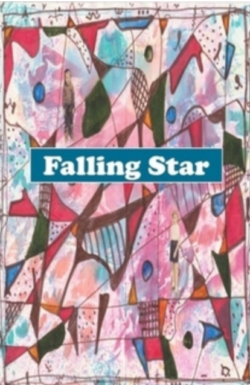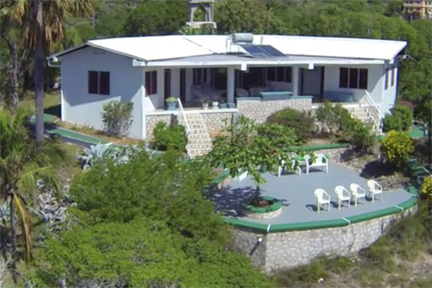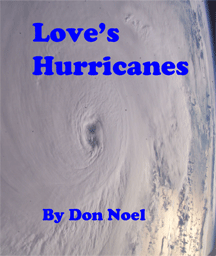Published by Falling Star, October 17, 2019
Andy and Bill first saw the dunes less than a half-mile off to the left as they passed Stovepipe Wells.
They considered bucking directly across  he desert floor, but that would have meant winding around rabbitbrush, occasional cactus and constant creosote bush. It made more sense to keep going east to the intersection where California Route 190 turned sharply south. Their Esso map – rudimentary, in those days, but probably reliable — showed a paved road going north toward Scotty’s Castle. There would surely be, off that road, some kind of track doubling back to the dunes.
he desert floor, but that would have meant winding around rabbitbrush, occasional cactus and constant creosote bush. It made more sense to keep going east to the intersection where California Route 190 turned sharply south. Their Esso map – rudimentary, in those days, but probably reliable — showed a paved road going north toward Scotty’s Castle. There would surely be, off that road, some kind of track doubling back to the dunes.
It was mid-afternoon on New Year’s Eve. In the years ahead, the very simple motel and restaurant they were passing would become Stovepipe Wells Village, a tourist attraction rivalling Furnace Creek as a base for exploring Death Valley, a huge hotel with a pool, several restaurants and other amenities including an airport for small planes.
But this was 1951; the valley was less a destination than an historic footnote – or a laboratory for two college kids. They both had signed up for Professor Powell’s course in geomorphology, then still a pioneering fringe of the geology discipline. Despite having enrolled primarily to satisfy the graduation requirement of a science course, they were by now thoroughly engaged, hoping to score an extra credit for field research.
Short of an Army surplus Jeep, Andy’s 1931 Model A Ford coupe, which he had painted a vivid Kelly green, was ideal for a desert trek. To be sure, the 80 miles from Lone Pine had been slow going. They’d left the foot of Mount Whitney – the highest peak in the continental U.S. — to climb several thousand feet up and over the Panamints and down to within a few feet of sea level now. The Model A’s pace, grinding and winding up and down steep canyons ungraced by foliage, gave them an appreciation of what prospectors faced in 1849 making their way to the California gold fields. Death Valley was not casually named.
Here, on the valley floor, the Ford’s oversized wheels and low-speed transmission were optimal for leaving the paved road. And sure enough, a few hundred yards north of the intersection was the original Stovepipe Well, with enough hints to beckon them toward the dunes. Sand and wind scoured and filled most tire tracks, but left enough faint impressions and broken brush to indicate that others had come this way.
The Mesquite Flat Sand Dunes. They were more impressive up close: great folds, never more than 150 feet high that nonetheless seemed mountainous, a monochromatic kaleidoscope of textured undulations and shadowed ripples. Doug had challenged them to find a hypothesis to explain why the crests were not – as most dunes — like bows aimed in the same direction, a series of neatly parallel crescents.
These dunes appeared on the map to comprise a kind of mini-mountain range, not much more than a mile wide and several miles long. The whole formation lay in a wind pocket among real mountains, an inversion that trapped the sand being constantly scoured off every imaginable kind of rock whose names they had painstaking learned: granite, quartzite, basalt, rhyolite, gneiss, schist, dolomite, talc and more, ranging in age from Precambrian to Cenozoic and Quaternary.
Andy drove along the southern flank of the dunes to the point nearest the motel — easily visible — and parked on hard desert clay a few dozen yards from where the dunes began to rise. They filled canteens, slung cameras over shoulders and compasses around necks, put a few extra rolls of film in pockets and began the slog through loose sand up to the nearest crest.
It was hard work. The map made it almost a mile to where they might slide back down to hard desert floor and walk around the foot of the dune range back to the car. It was just a few days past the shortest day of the year. If they had calculated the probability of completing that circuit in the hour and a half before sunset, they might have hesitated. If they had realized that the wind was rising, they would surely have held back. The heat of the bright sunshine did not prompt them to think about the time, though; and being new to this microclimate, they had no way to gauge the wind.
They stopped often to photograph sand formations, twice putting in fresh rolls of film. They measured with hands and strides the distance between distinct ripples in the sand, and wrote down their observations. They consulted compasses and took notes on where the wind came from at various points, talking to each other about theses they might propose in their paper for the professor.
It occurred to them, after a while, that the winds seemed to be rising, but they had no way to gauge whether that was just a localized effect. Not until they half-tobogganed down the last steep dune to hard ground did they agree that yes, there was substantially more force in the wind than when they’d left the car.
The sun had set while they were still up on the dunes, plunging behind the tall mountains to the west so abruptly that dusk had gone swiftly to dark. A few stars were visible overhead. It was only two days past a new moon, so a crescent sliver wouldn’t rise for another hour or so — and wouldn’t do them much good even then.
Still not really worried, they set out toward the car. They might have jogged, but their legs ached from slogging through sand. Nevertheless, they set a brisk pace, conscious that the wind was still rising and beginning to carry sand with it.
In a half-hour they thought they must have rounded the heel of the dunes and be near where they’d parked the car, but they couldn’t be sure because the wind was now full of sand, blotting out the sky overhead and everything even ten yards around them.
It was disorienting. Andy couldn’t read his compass in the dark. Bill’s had radium spots. They were heading south, and the car ought to be off to their left, eastward.
They spent half an hour trying to find it, using a plan they improvised on the spot. Andy took first turn as anchor, hollering every 60 seconds while Bill strode off into the sandstorm, out of sight in moments. As Andy’s voice grew faint against the howl of the wind, Bill stopped, hollered back, then moved to his left 40 yards, back to center and 40 yards to his right and back again, tethered to Andy by their voices as though to a rope.
When the first pass failed to find the car, Andy came up to join Bill and reverse roles, making Bill anchor. They managed the maneuver twice more, swapping roles each time, without stumbling into the car. It was exhausting physically and mentally, trying to stay linked inside two cocoons of swirling sand while covering a deliberate search pattern.
At last they gave up, deciding to seek shelter at the motel. They used Bill’s compass to strike south, and were amazed to find themselves on the paved road in less than ten minutes, their feet finding the hard pavement before their eyes could recognize it. After a moment’s hesitation, they decided the motel must be to their right, westward.
They were right: Almost immediately there was a brightening of ahead of them through the sand haze, an intersection of dark terror and illuminated promise. In another few minutes they were at the Stovepipe Wells Motel and Restaurant, its parking lot full of cars, New Year’s Eve guests inside at drinks and dinner, oblivious to the storm outside.
One look at themselves in the plate-glass window was enough to dissuade them from going in the front entrance: They might have caused chaos among the revelers. Their eyes looked out hollowly from blackened faces, as though the swirling sand had somehow been infused with coal dust. They found their way instead back to a kitchen entrance, where they were met by initially shocked but soon helpful people, some their own age.
The manager was called, and was sympathetic. Yes, the motel was full, but there was a storeroom with burlap bags that could shelter them overnight, and there was plenty of food. No charge; the manager had a teen-age son who might someday have such an adventure. Why didn’t they wash up in the staff locker room? And how about some roast turkey?
They found themselves, for a few hours, minor celebrities. Even the veteran employees had never studied the geology of Death Valley; most of those in the kitchen and engaged in waiting table were seasonal employees, here for the first time. The two collegians conducted a series of mini-seminars for a rotating class of eager listeners. Finally, well-fed and worn out, they begged off and retreated to the storeroom, whose burlap proved comfortable enough to promote sound and unbroken sleep.
The morning kitchen staff must have been alerted to their presence and plight: They emerged to a chorus of greetings. The kitchen was suffused with aromas of hearty tourist breakfasts. They ravenously happily partook, looking out at a crystalline morning and cloudless blue sky that seemed almost a different planet from the one they’d endured the night before.
The presiding cook had come over from his home in Furnace Creek this morning, and had noticed a bright green Model A parked at the foot of the dunes. They would have no trouble finding it, he assured them. Still, as an old-timer in Death Valley, he surmised that the sandstorm might have left a thick, soft blanket on what had been hard ground yesterday. There happened to be several two-by-eight planks, ten feet long, out in back of the motel, left over from some building project. It might be worth the effort, he suggested, to borrow them and lug them over to the Ford, to be sure they could coax it onto drivable terrain.
So they set out in the still-cool morning, a strange sight had anyone chanced to drive by: two still-grimy young men hiking down the highway and into the desert, separated by two long planks of lumber that hung suspended at arms’ length. The walk took less than fifteen minutes.
The Model A stood where they’d left it, appearing as they approached to be on solid ground. If it were possible for a tire to stand on a single grain of sand, they told listeners later, the front and rear wheels on the right-hand side – the windward side – stood that high and dry, free and clear of any encumbrance.
Their relief vanished as they came closer: On the lee side, sand was piled up as high as the door handle. It was a classic example of how dunes are formed: The wind hit the car and wheels, lost momentum, and deposited its suspended sand just beyond the obstruction; following winds hit what became a significant ridge under the car – the beginnings of a dune — and left more sand on the lee side. The car, had they been able to find it last night, would probably even that early have been thoroughly mired. However long the sandstorm lasted into the night, it kept depositing its load of sand in a mini-dune that grew to envelop the left side of the car.
The planks would do them no good, at least not yet; they took photos, then hiked back to the motel to borrow shovels.
It took a solid two hours to get rid of the sand mountain that pinioned the left side of the Model A, and to shovel away the sand that then drained out from the engine compartment. In the final step, they set the car’s jack on one plank and levered the left side wheels three or four inches off the ground. The second plank was long enough to tuck under both wheels; they lowered the car onto it, and put the first plank in front to assure solid footing for the left wheels going forward.
With Bill poised to push, Andy got in the car and tentatively turned the key in the ignition, unsure how much sand might have gotten into the Ford’s innards. Joy! The engine coughed, and started. He put the car in gear and inched forward, over the planks and out onto solid ground, needing not even a nudge from Bill.
Planks and shovels wedged into the rear bumper, they drove back to the motel, thanked everyone, and went back to the car to plan the route home.
The original scheme had been to go back to the T intersection, drive north to Scotty’s Castle, and then take an unpaved road that skirted Eureka Valley, where there was another larger but less complex dune that they might study.
They decided to go back the way they’d come, to Lone Pine and north, on paved road all the way.
-End-





